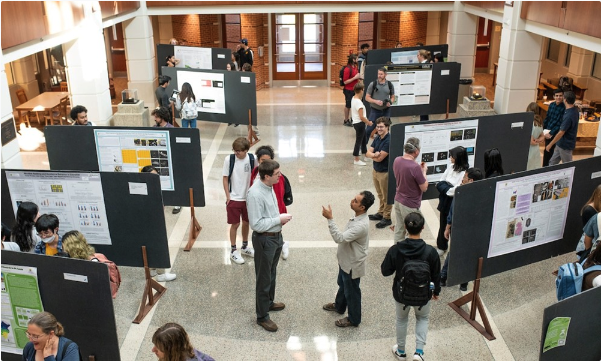Document Type
Poster
Publication Date
Fall 2021
Abstract
Oxidative stress occurs when there is an imbalance of reactive oxygen species and antioxidants. The brain is especially vulnerable to the effects of ROS because of its high oxygen demand. Previous studies have demonstrated that oxidative stress plays a central role in common neurodegenerative diseases such as Alzheimer's disease and Parkinson's disease. Furthermore, ROS have been found to trigger programmed cell death in cancer cells. Our lab aims to investigate the oxidative stress response in Saccharomyces cerevisiae by studying its growth at different concentrations of a compound called benzylamine, which is thought to have possible anticancer effects. To identify the different biological pathways being affected by the compound, we began by testing different concentrations of the compound with DMSO on yeast mutants. Each mutant had a different growth compared to the control at both the 30nM and 300nM concentrations while still not being completely wiped out. After evaluating the growth patterns of twenty-six different yeast mutants in comparison to untreated and wild type cells, we identified four proteins to focus on that are involved in similar biological pathways: Δzwf1, Δyap1, Δaif1, and Δtsa1.
Recommended Citation
McDaniel, Autumn and Mordan-McCombs, Sarah PhD, "Analyzing the effect of benzylamine product on yeast cells deficient in the oxidative stress response" (2021). Annual Student Research Poster Session. 62, Scholarly and Creative Work from DePauw University.
https://scholarship.depauw.edu/srfposters/62



Comments
Funding provided by the Science Research Fellows (SRF) program.